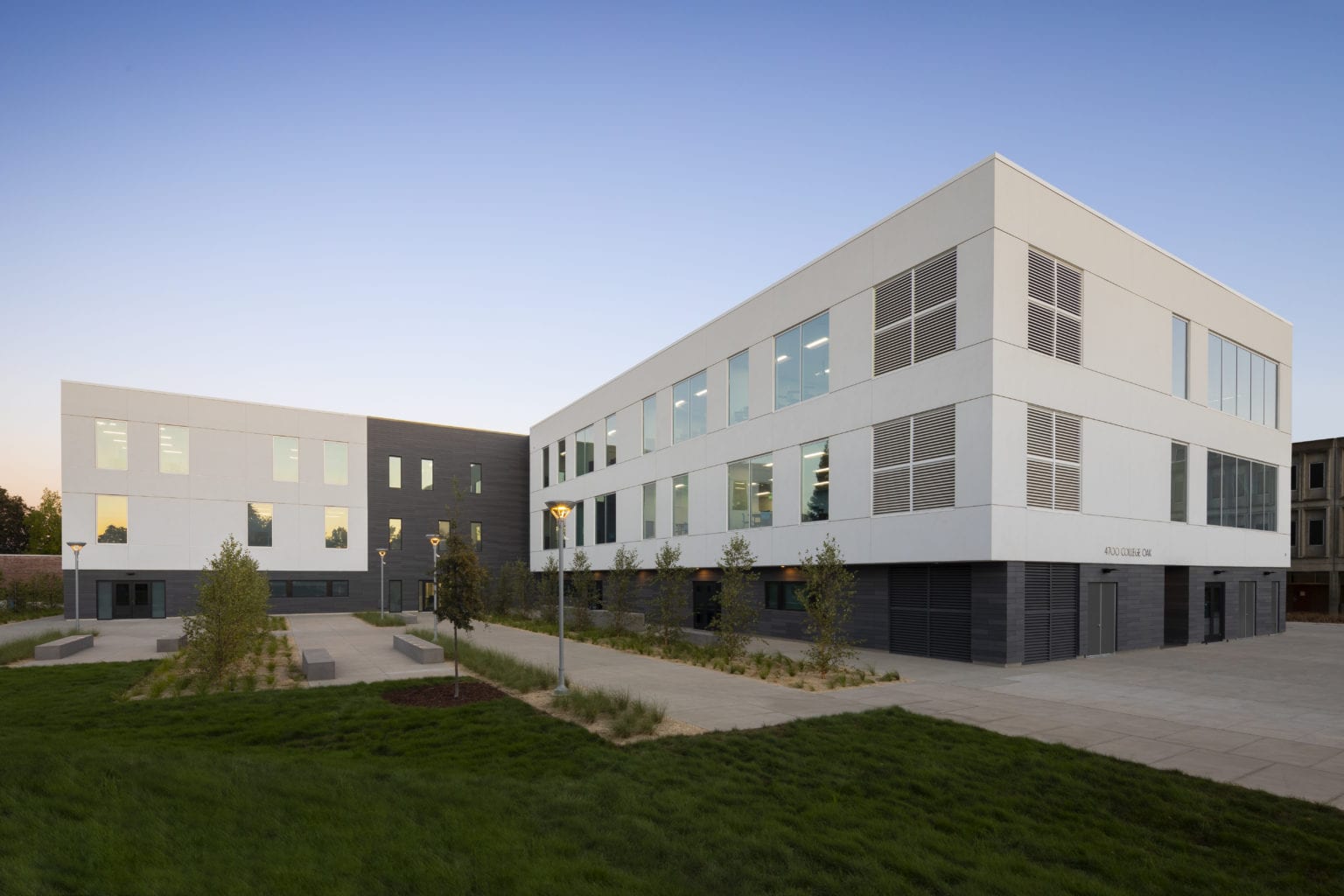In fall 2018, the American River College in Sacramento, California, broke ground on a new STEM building designed to be a state-of-the-art learning environment for its students. The new three-story, 57,000 square foot steel-framed structure offers classrooms, lab space, and faculty offices. The building’s exterior claddings consist of cement plaster, metal panels, aluminum composite panels, and aluminum-framed windows, and the building is topped with a single-ply membrane roof. The wall assemblies are designed to meet the requirements of California’s energy code with continuous exterior insulation, and to meet California’s seismic requirements with drift joints placed at each floor line between the glazing components and cladding systems.
Our team provided building enclosure design peer review, construction administration support, construction field review, and water performance testing of the glazing systems and assemblies. We reviewed construction documents, submittals, shop drawings, requests for information (RFIs), and architect supplemental instructions (ASIs), and we provided recommendations on building enclosure assemblies and details as requested. The scope of our work considered thermal, air, vapor, and water penetration control related to the building enclosure.
The building is situated in an active seismic area in the California Central Valley region, so it needed to meet significant design requirements for lateral movement at the building structure and enclosure. The expected lateral movement also had to be isolated from the glazed fenestrations to prevent the movement from being translated to the glazed assemblies. In addition, the design team set high thermal performance targets that required the use of exterior continuous thermal insulation to limit the energy loss through the steel-framed structure.
Based on the building’s structural lateral movement requirements determined by the structural engineer, our team recommended that seismic joints be implemented at building enclosure assemblies. The seismic joints were implemented at each floor line to accommodate lateral movement through the drift joints to isolate the different floor structures during a seismic event. This approach presented unique challenges for interfacing with the exterior-insulated, drained cement plaster cladding assemblies and the perimeter of the glazed fenestrations. We provided recommendations that were used to develop the drift joint details around the perimeter of the building enclosure to accommodate this expected movement without translating the movement to the glazed assemblies. The drift joint details consisted of pre-formed sheet silicone transition strips to allow for maximum movement while providing continuity to the enclosure control layers.
The building’s cement plaster cladding assembly included a drainage panel to promote drainage and drying within the wall assembly. The drainage composite creates a dedicated drainage layer behind the water-shedding cement plaster cladding before the water can reach the air and water barriers over the exterior wall sheathing.
Our team made multiple site visits to review on-site mock-ups and confirm that the building enclosure construction was in conformance with the drawings and specifications. We also identified non-standard details and assisted the architect in determining appropriate solutions, and we checked that appropriate material specifications were being met.
Despite the college’s shutdown during the 2020 COVID pandemic, construction was completed by summer 2020 with plans to make the building available for student use by the winter 2020 semester.
Renderings by Chip Allen Architectural Images
Share This Post
Date:
March 8, 2021
Client:
American River College
Architect:
Gould Evans Architecture
Our Role:
Building Enclosure Consultant






